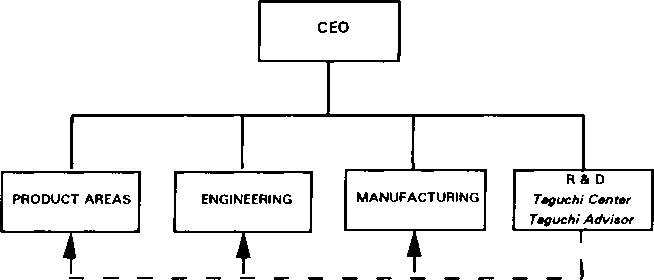00306 ¯81ca8ef14720ce7a99098143a2ad55
Altemative Approaches to Implement a DoE Program
309

FigurÄ™ 2. Altemative B - Esperts from the R&D Group.
classroom and start working on it immediately. The cross functional teams brainstorm factors and Ievels, layout experiments, and leam to use analysis software. In the classroom lectures, the topics of choosing experimental designs and Taguchi's Signal-to-Noise analysis are given the most emphasis.
The length of their Taguchi methods training course has been scaled down significantly sińce the initial offering. The course was originally scheduled as a two week session, but suffered from a very high dropout ratę. It was reduced to one week but the results were much the same. Attendance improved when it was condensed into a two day course. Finally, it was decided that all of the critical materiał could be covered in one day. This format has been working well.
Altemative C - Divisional Taguchi Experts
Each division of this company has a Staff of Taguchi Experts (see FigurÄ™ 3). The divisions also conduct their own unique training programs. They do not use a uniform approach to training because of multiple facility locations and the size of the company (300,000 employees). They conduct both broad-brush and project-by-project training, but acknowledge that the training by-project works best. The R&D branch of this firm has 400-500 people trained in Taguchi methods. Most training is developed and conducted in-house, however, some is obtained from outside sources.
Wyszukiwarka